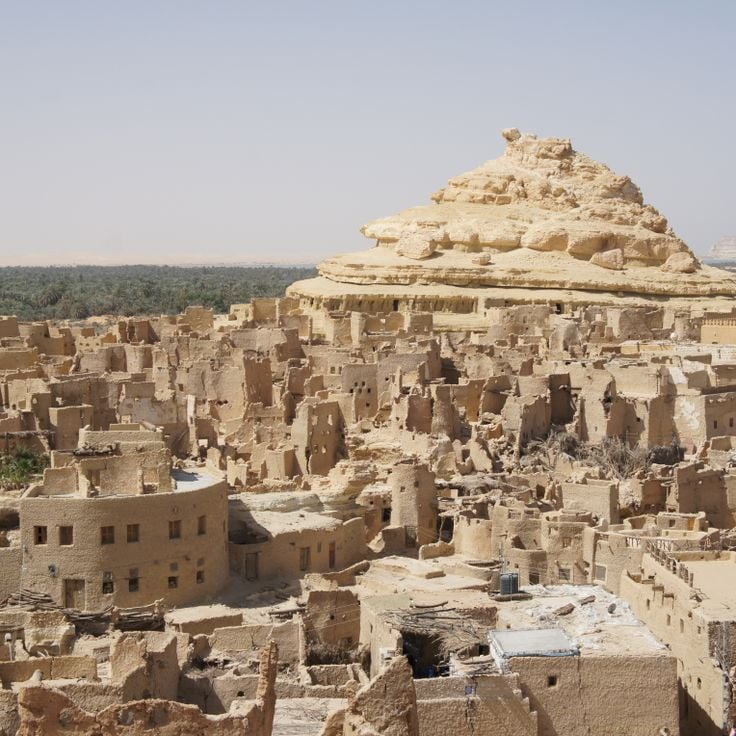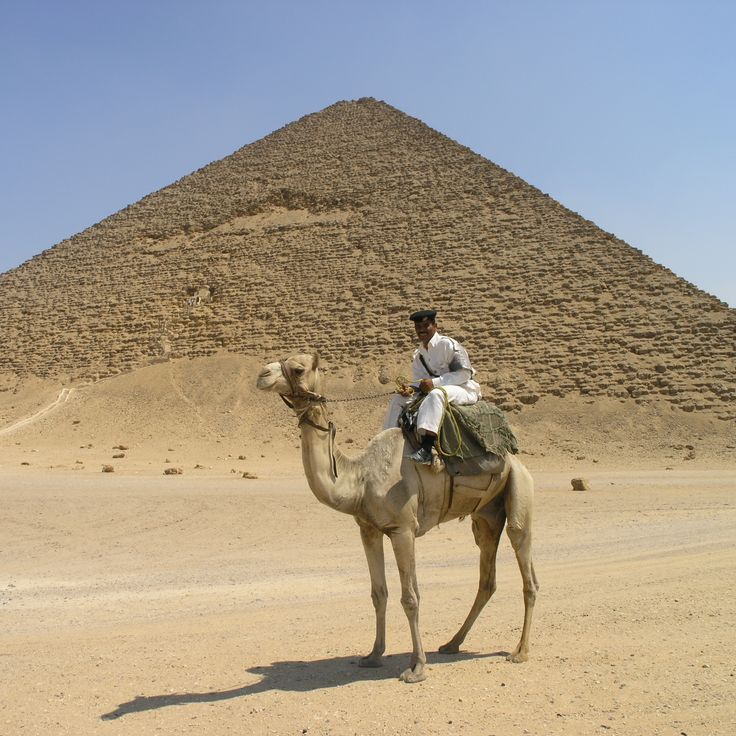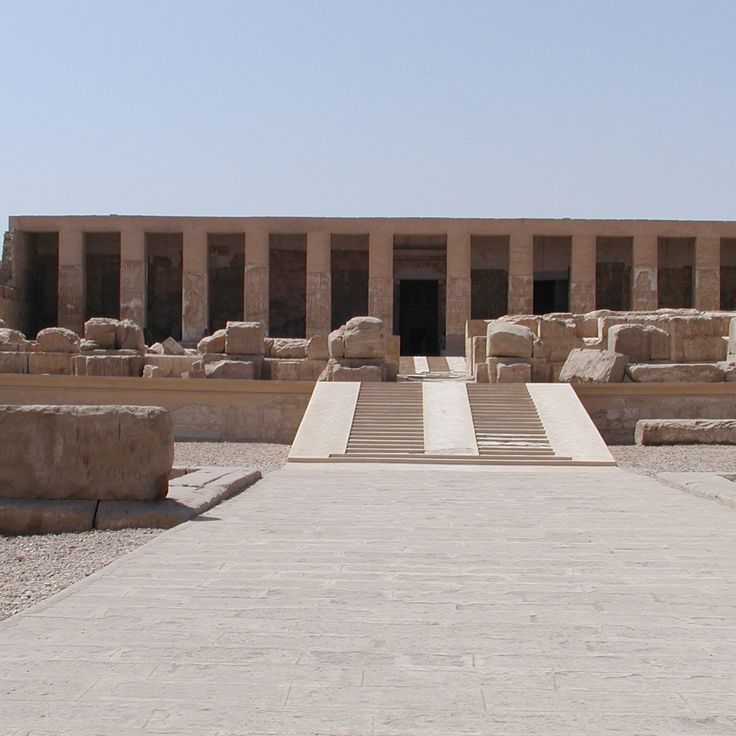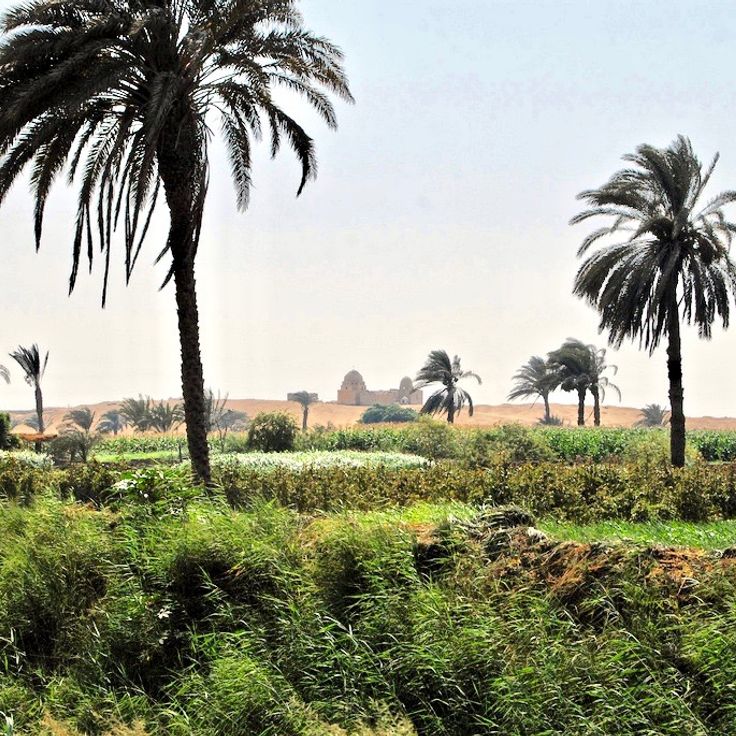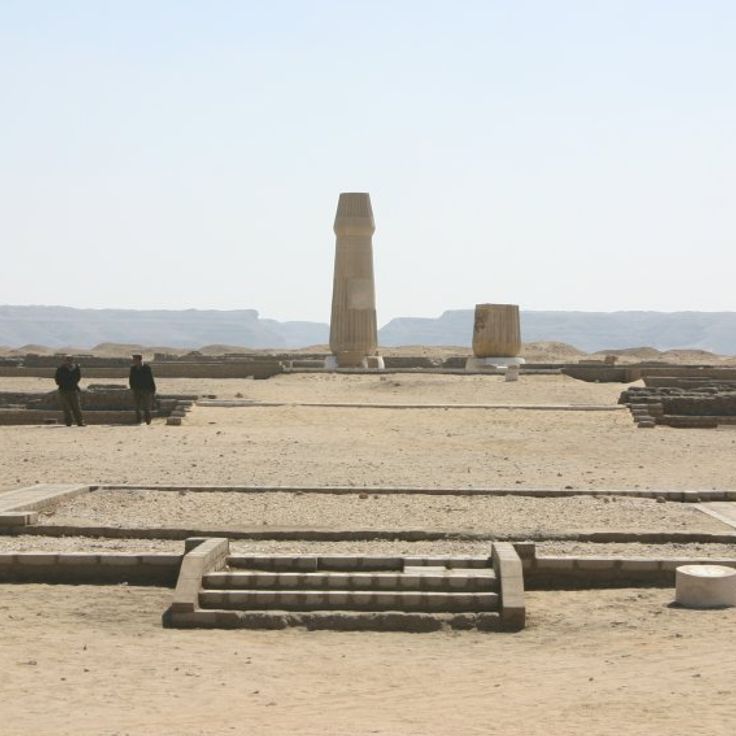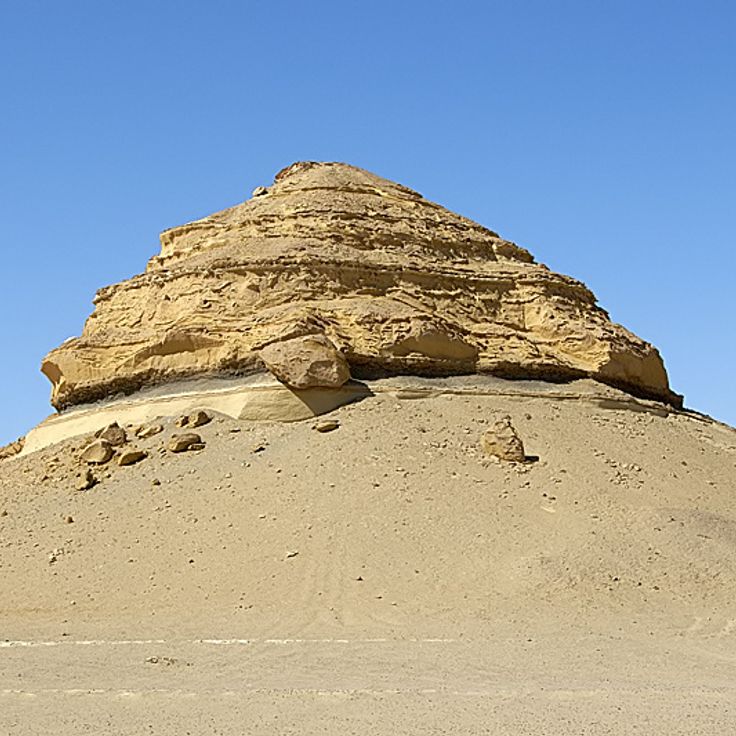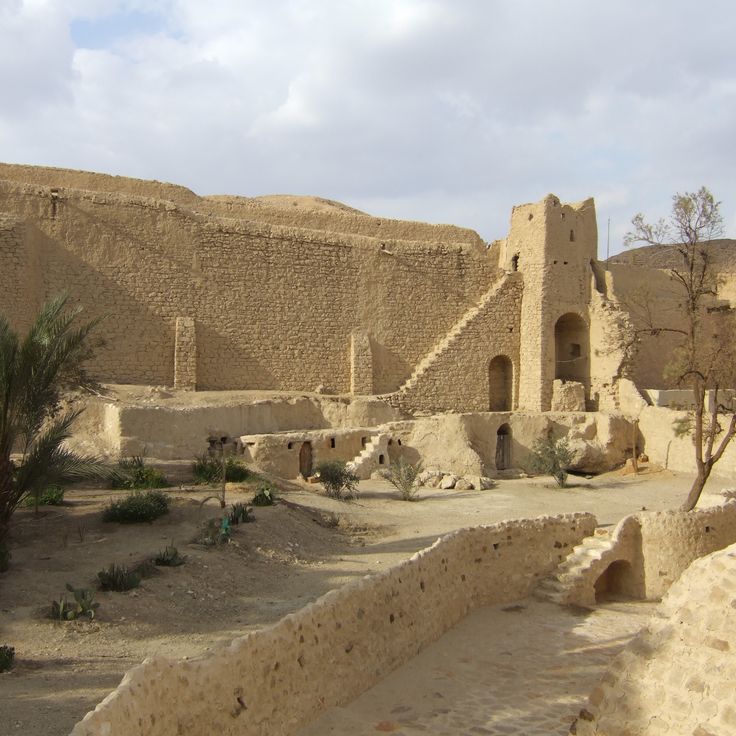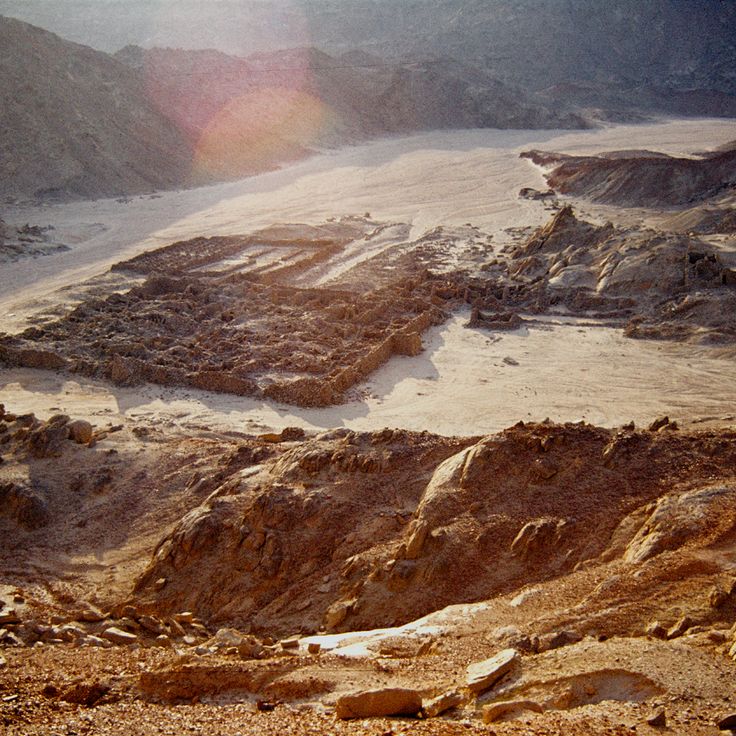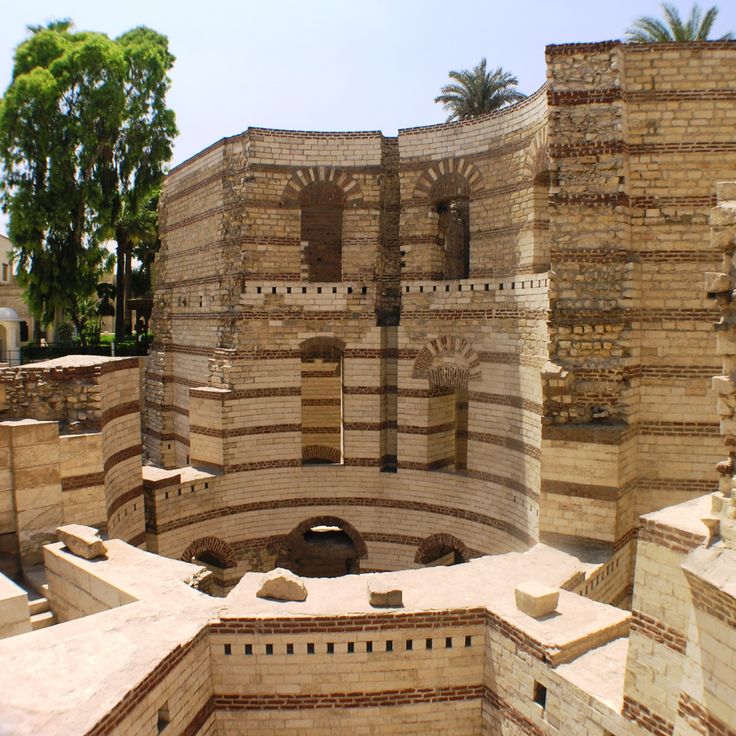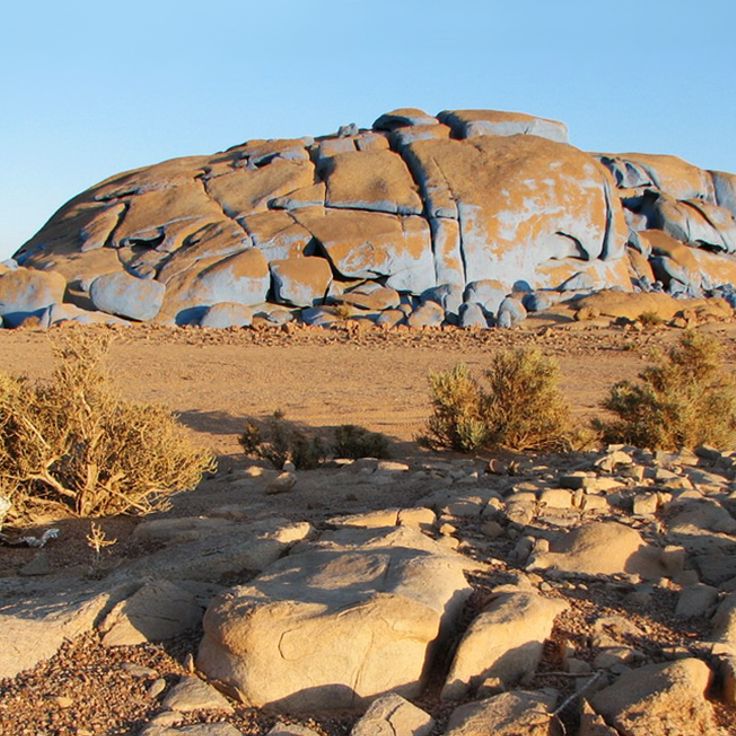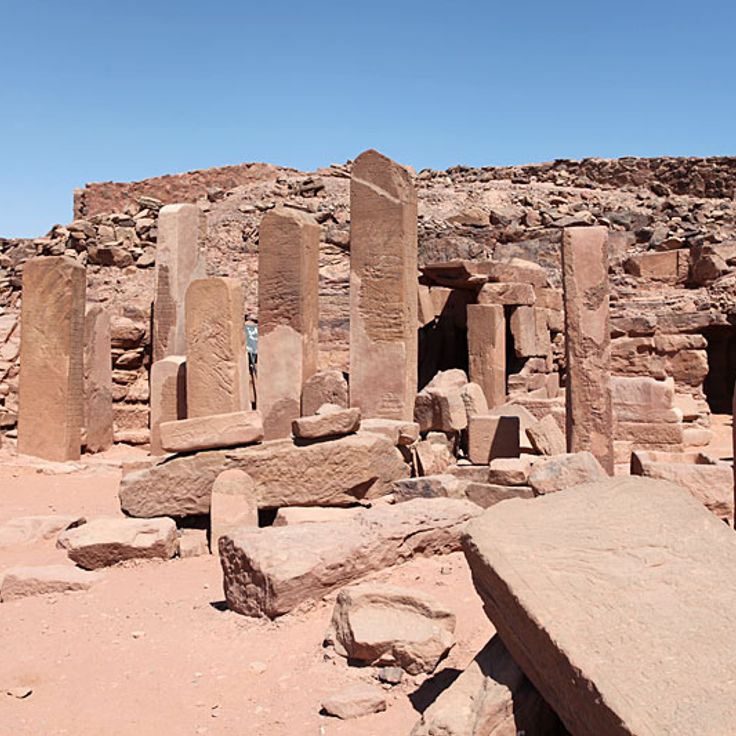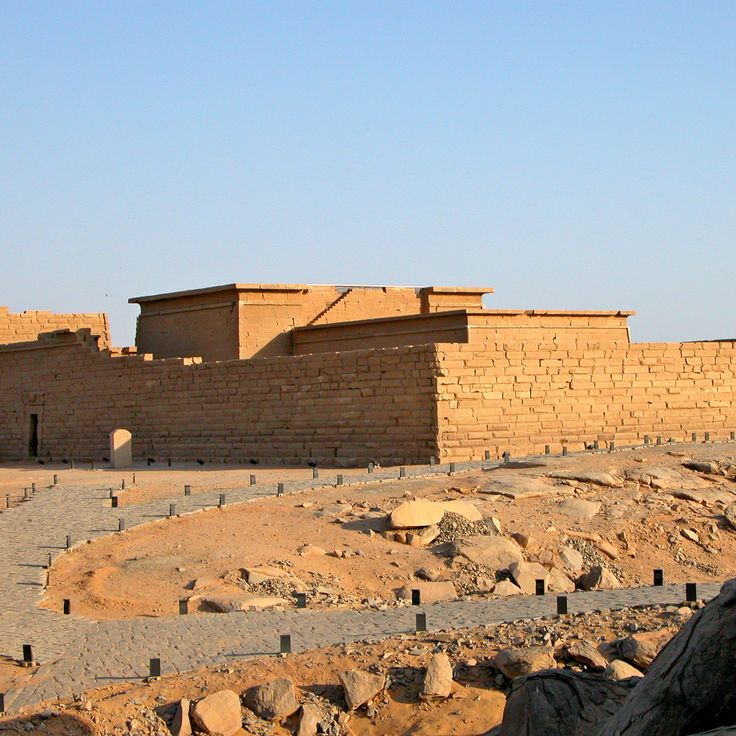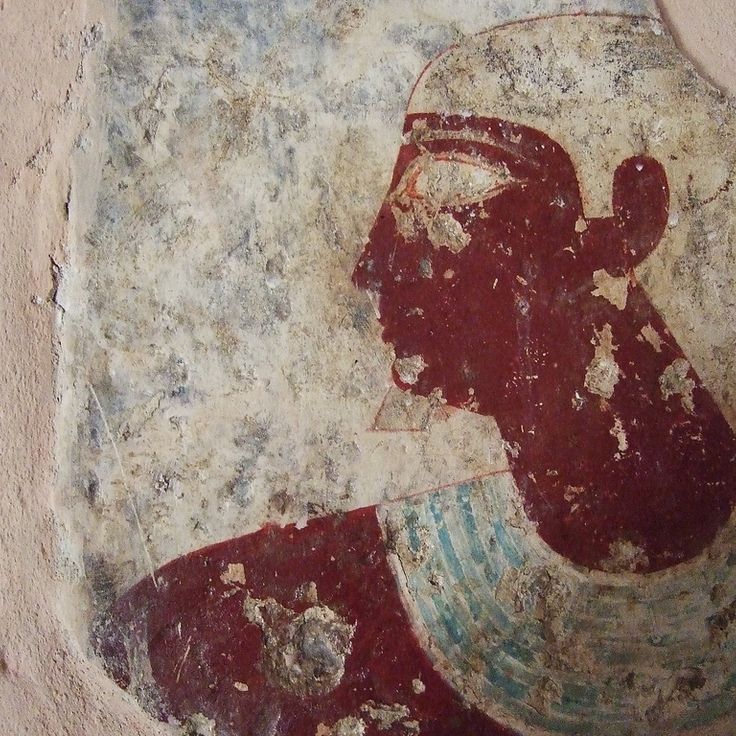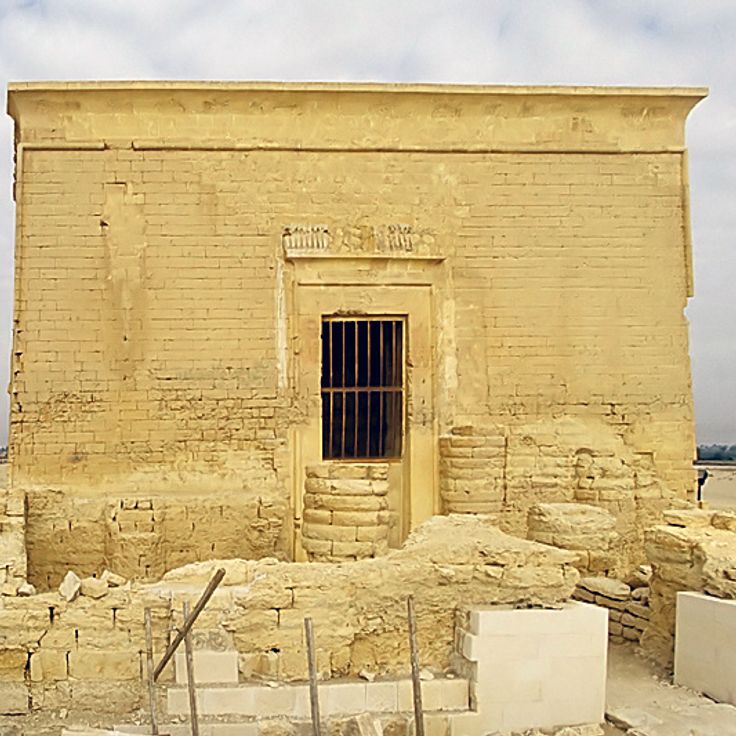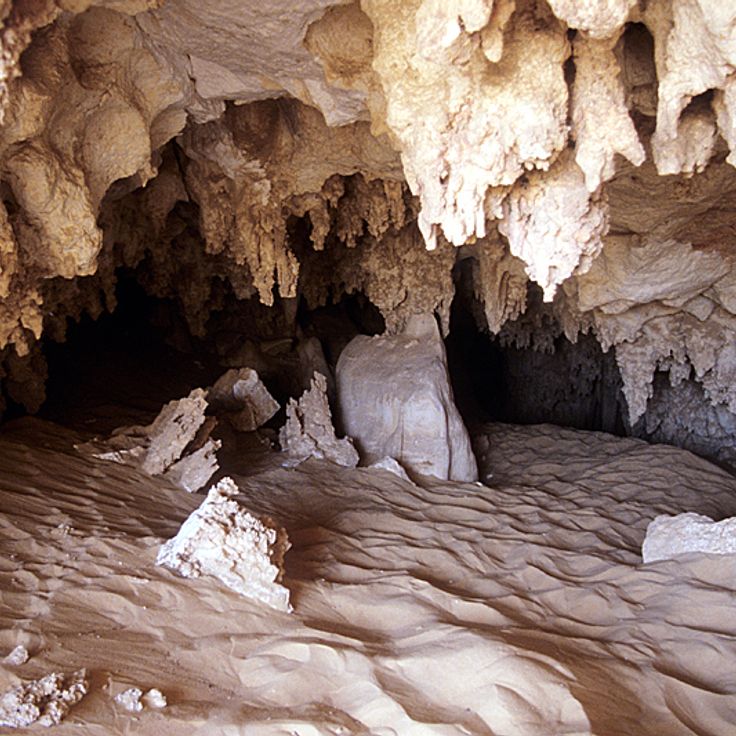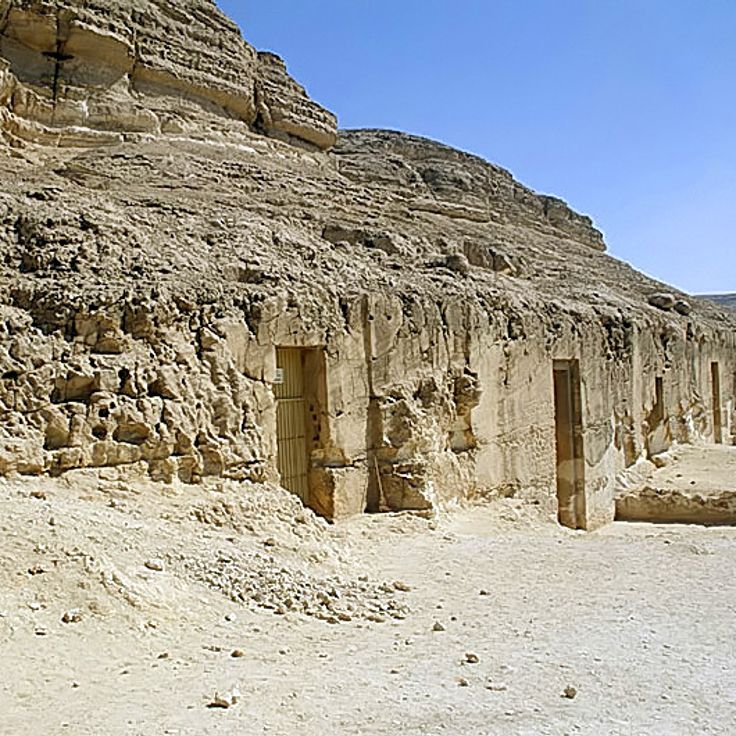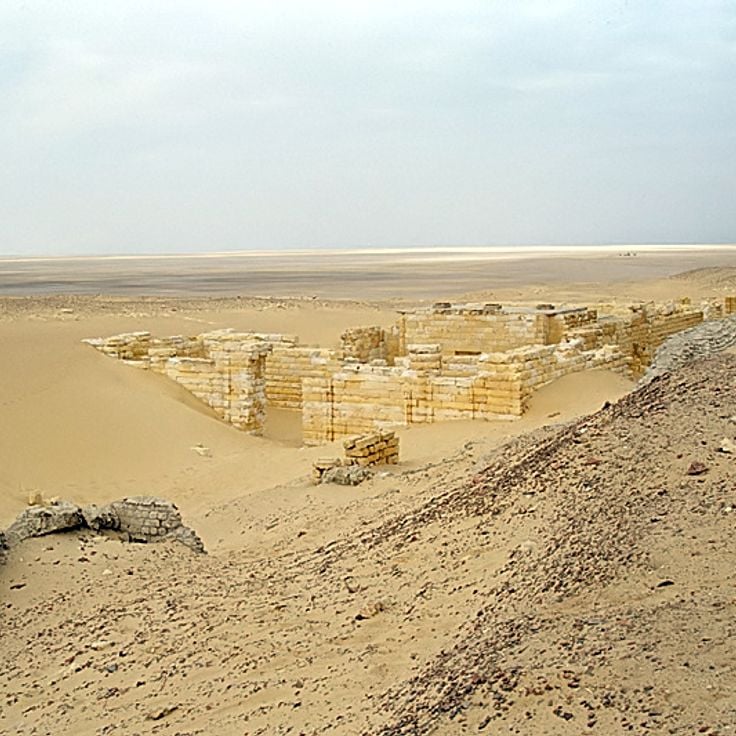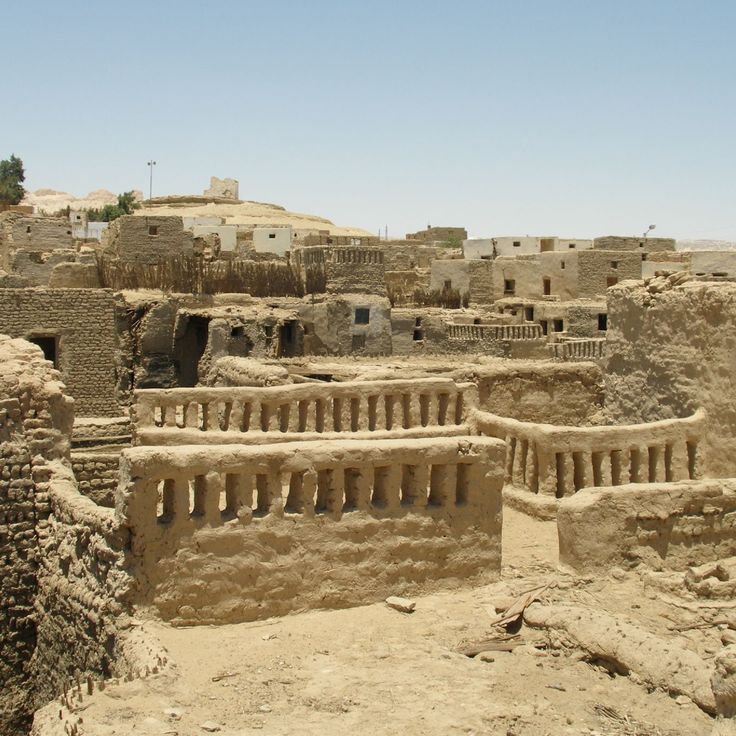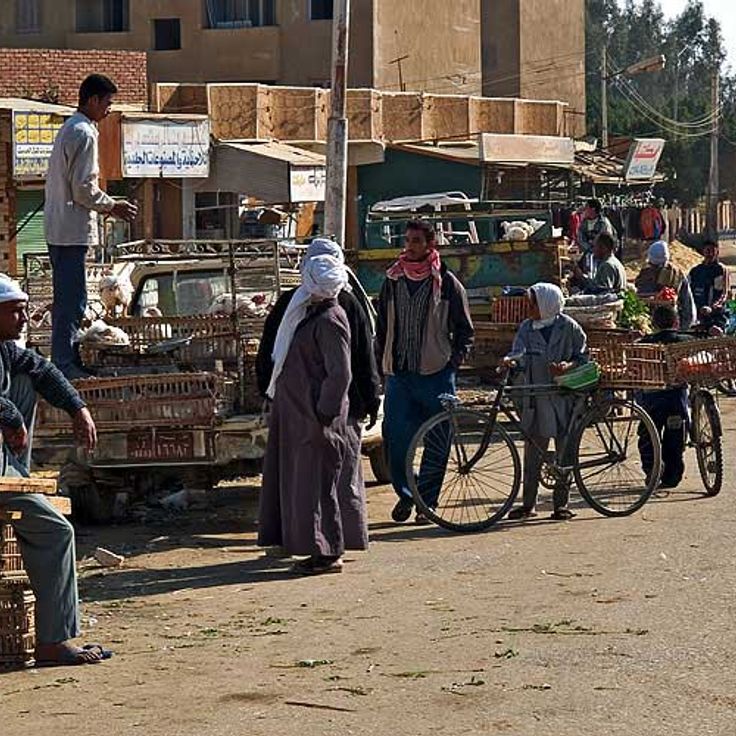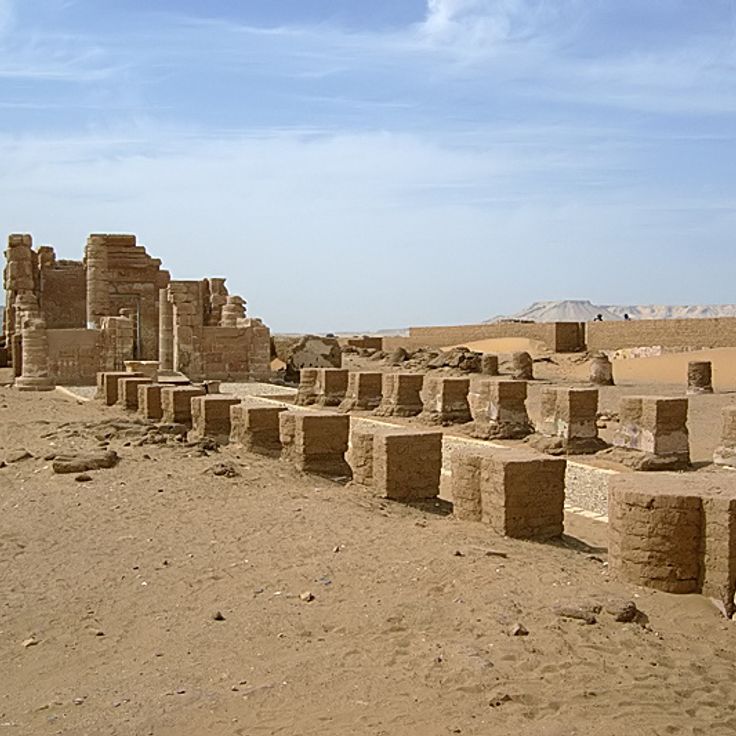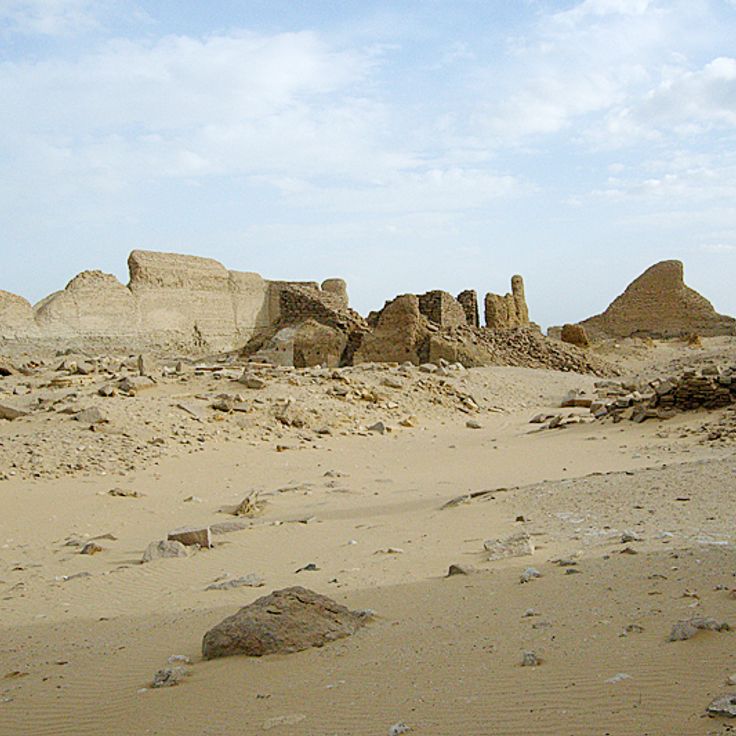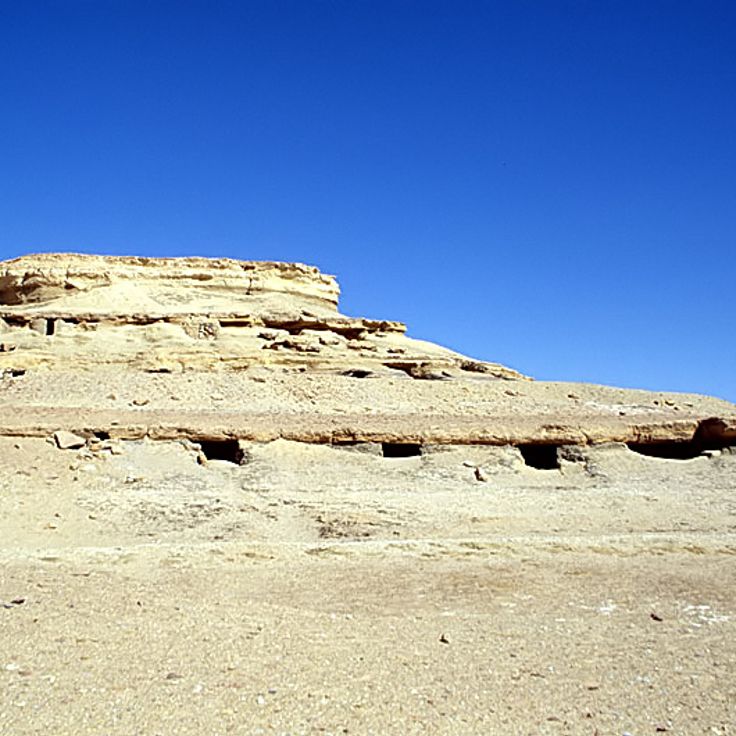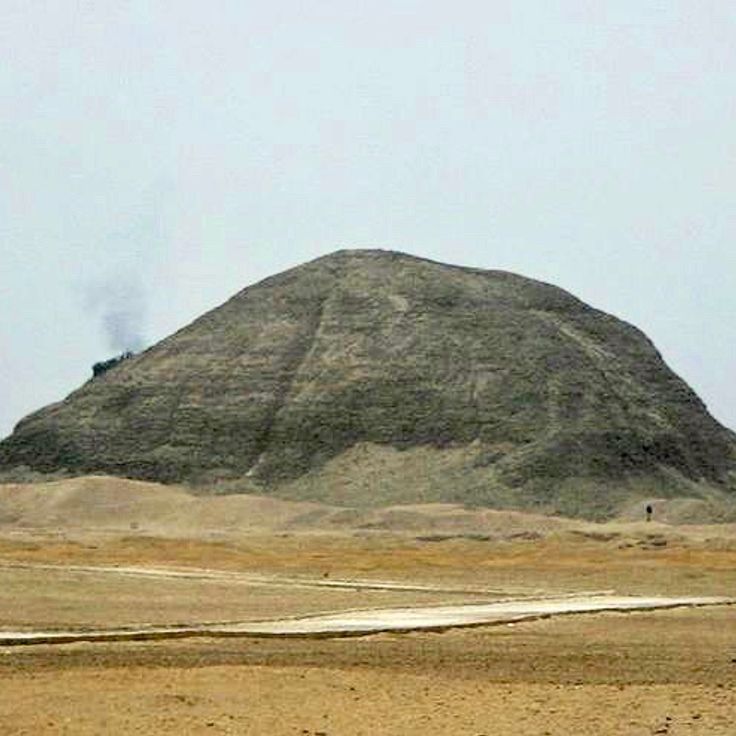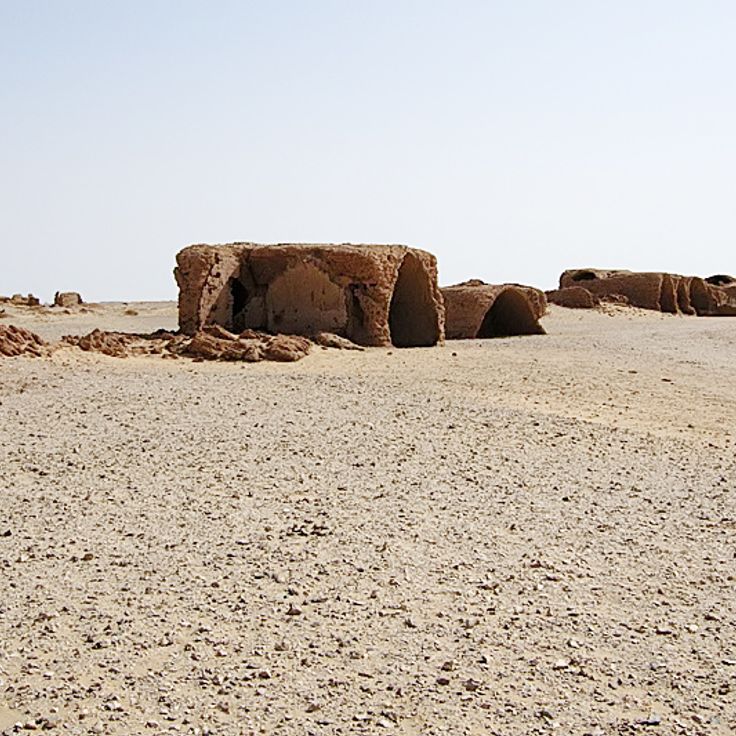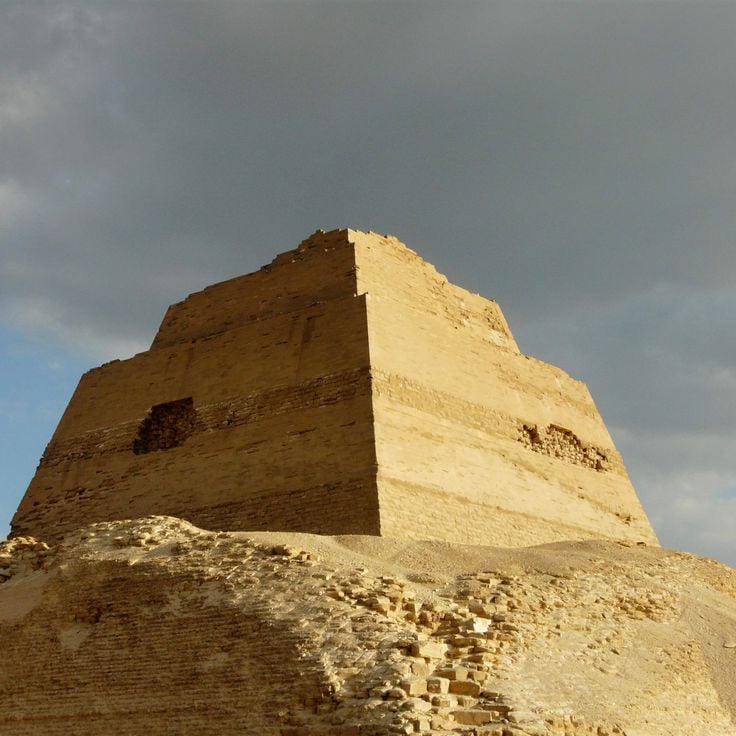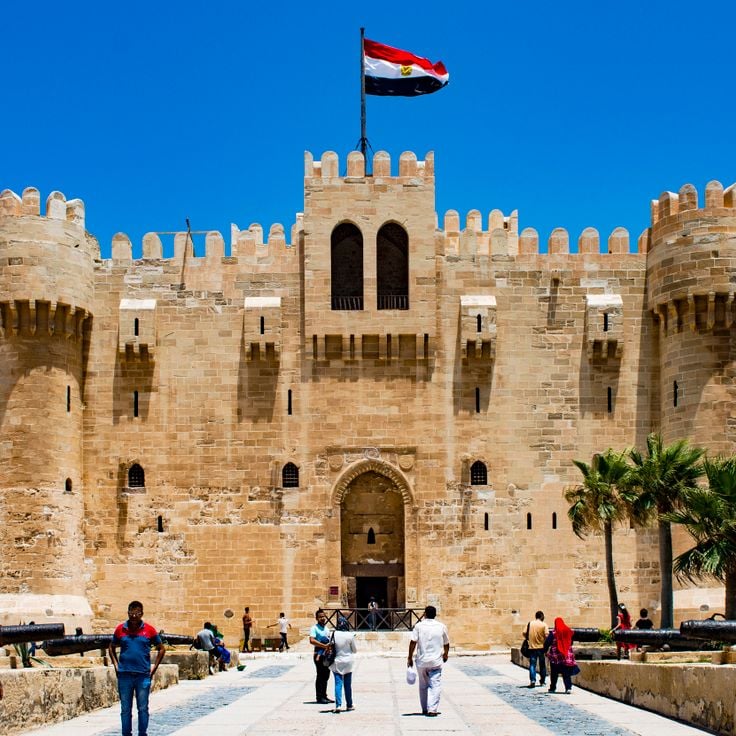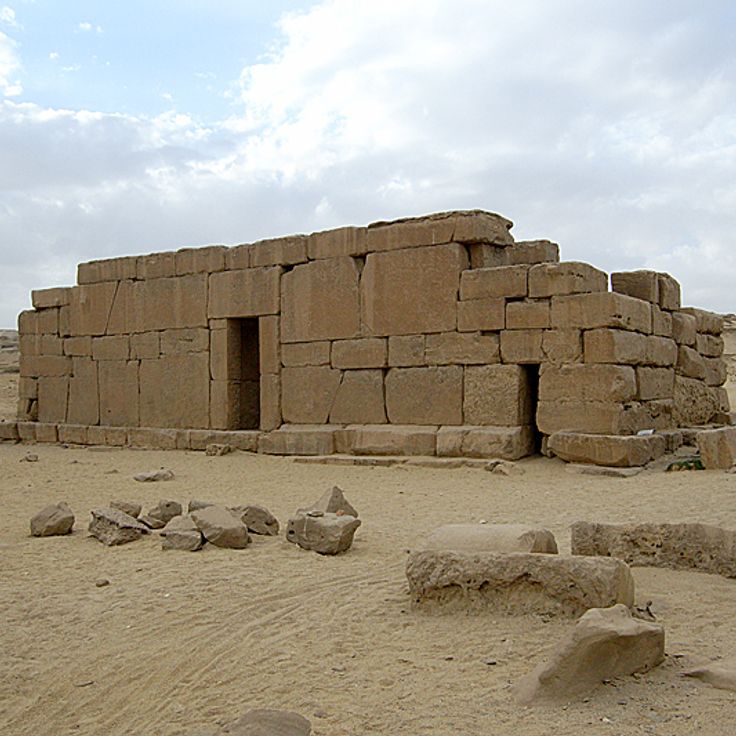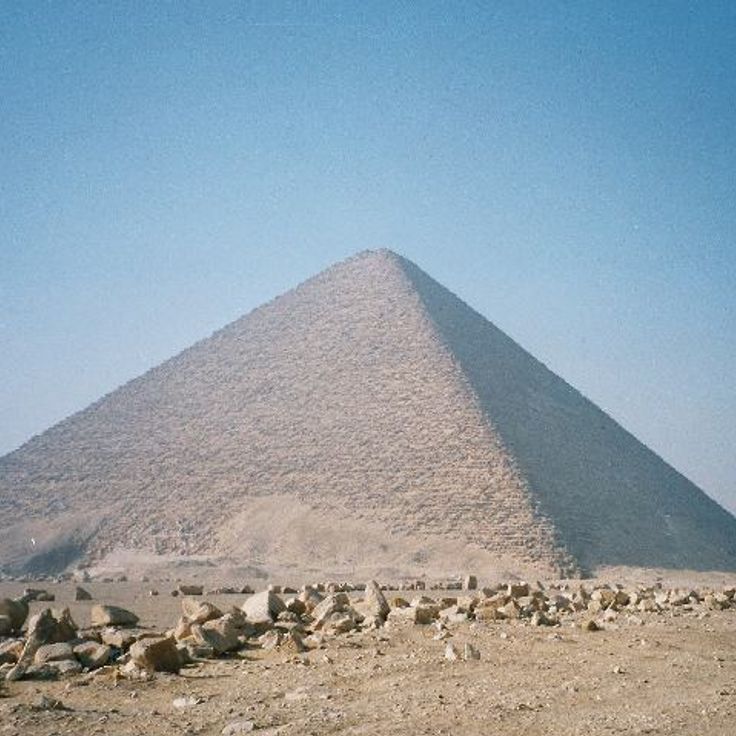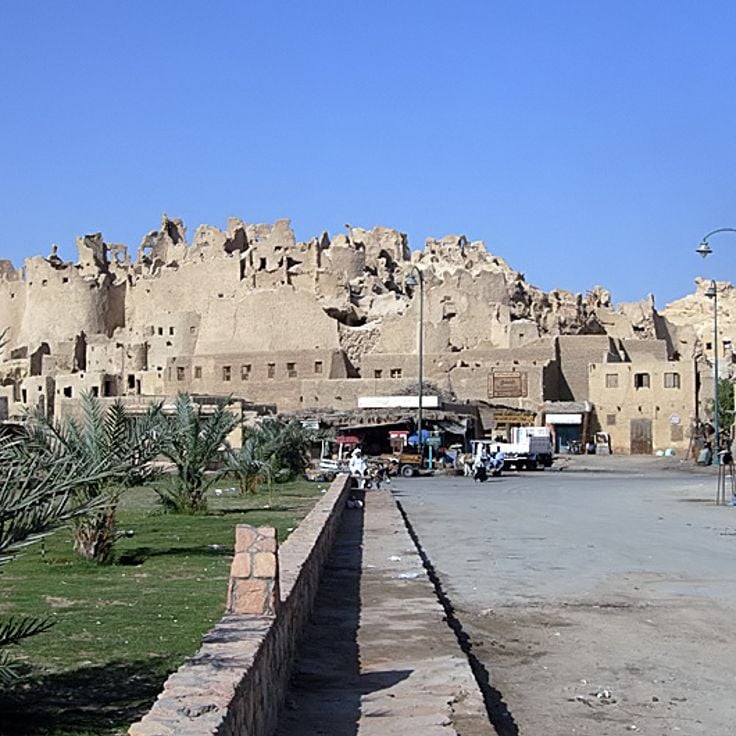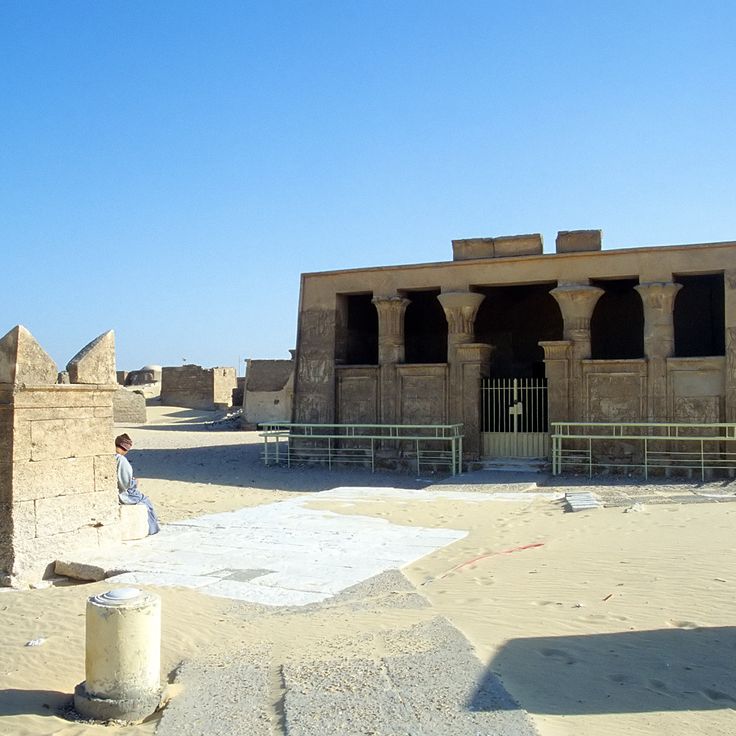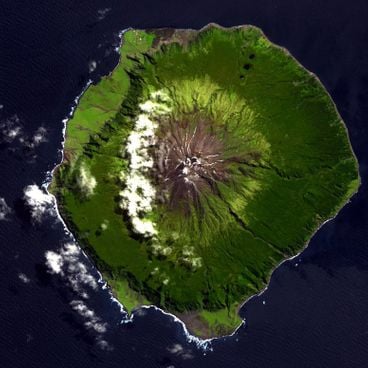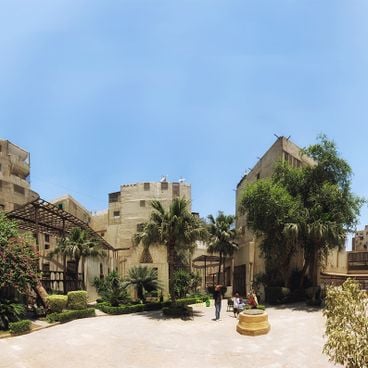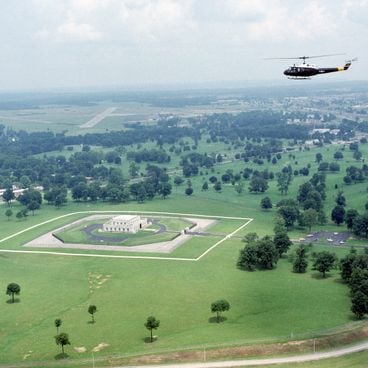Egypt holds many archaeological sites extending far beyond the pyramids of Giza. From the Bent Pyramid of Dahshur to the rock temples of Speos Artemidos, these locations reveal Egyptian architecture across different periods. The collection includes desert fortresses, Roman quarries, prehistoric caves, and religious complexes scattered across regions from Alexandria to Aswan. Visitors can explore steep pyramids from early dynasty times, see colorful painted tombs cut into cliff faces, and discover desert settlements that show how people lived in past cultures. From the Mediterranean coast to the southern sand dunes, this collection offers a view of Egypt's past. You will find royal burial grounds with intricate tomb chambers, early Christian monasteries built into mountain caves, and remains of cities buried under desert sand. Each location tells the story of the people who lived, worked, and buried their dead there.
Desert Basin is a natural depression in the Libyan Desert containing salt lakes and date palm groves. The site holds remains from ancient Greek and Roman settlements, showing how people adapted to life in the desert. This location demonstrates the wide range of archaeological evidence found across Egypt, from pyramids to settlement sites that reveal daily life in different periods.
The Royal Necropolis is one of Egypt's major archaeological sites, showing how pyramid construction evolved during the Old Kingdom. This burial complex contains several pyramids built under King Sneferu, including the Bent Pyramid and the Red Pyramid. These structures reveal how Egyptian builders developed and tested different construction techniques and forms. The site provides insight into the religious beliefs and building methods of one of the world's oldest civilizations.
The Mortuary Temple is a religious complex built in 1290 BC that displays stone reliefs showing Egyptian deities and ceremonial rituals. It contains seven sanctuaries dedicated to different gods. This site represents the temple architecture and religious practices found across Egypt's various regions throughout its history.
This natural depression is part of Egypt's remarkable collection of archaeological sites that extend far beyond the pyramids of Giza. Located in Faiyum Governorate, it contains remains from Ptolemaic and Roman periods alongside traditional water wheels that have supported agriculture for generations. The site also features Egypt's largest natural lake, making it a key location for understanding how different civilizations used the land over time.
Amarna is an archaeological site in Minya Governorate that preserves foundation ruins, tombs and temples from the 14th century BCE when Pharaoh Akhenaten founded his new capital. The site shows how an Egyptian city looked during this period, with residential buildings, administrative structures and religious complexes. Amarna represents an important chapter in Egyptian history, part of the broader collection of monuments and sites that span different periods and regions from Alexandria to Aswan.
Wadi al-Hitan is a desert valley that holds fossilized skeletons of whales that died 40 million years ago. The remains show how whales evolved from land-dwelling mammals. This site contributes to Egypt's collection of archaeological locations that span different periods of history. While many sites display human-built structures like temples and fortresses, this valley documents a far older story - the transformation of animals that would become ocean dwellers.
The Monastery of Saint Paul the Anchorite is a religious complex founded in the fifth century CE and represents one of Egypt's important archaeological sites beyond the pyramids. The monastery contains ancient wall paintings, manuscripts and architectural elements spanning various historical periods. It offers insight into early Christian life and artistic practices in the Red Sea region, showing how religious communities adapted their structures and decoration over centuries.
Mons Claudianus is an ancient Roman quarry settlement that operated from the first to the third century CE. This site within Egypt's collection of archaeological locations reveals how granite was extracted for imperial buildings and the conditions of work in remote desert settings. The remains show the organization of labor and the tools used by workers of that era.
This Roman military fortress from the 1st century sits on limestone hills in Cairo and represents the diverse Egyptian monuments found throughout the collection beyond the famous pyramids. The fortress walls measure 3 meters thick and included guard towers that controlled the surrounding region.
The Blue Desert in South Sinai represents a different kind of monument within Egypt's collection of archaeological sites. In 1980, artist Jean Verame painted boulders and rocks with blue pigment across a large area of the Sinai desert to commemorate the Egypt-Israel peace treaty. This work demonstrates how humans have left their marks on the landscape across different periods and through different means.
Serabit el-Khadim is an archaeological site that is part of Egypt's collection of ancient monuments and archaeological locations. The site displays ancient Egyptian turquoise mines and inscriptions dating to around 2000 BCE. A temple complex honors the goddess Hathor, protector of miners. The location shows how ancient Egyptians worked the mines and practiced their religious beliefs.
This temple in Aswan is a Ptolemaic structure dating to 30 BCE that faced an unusual fate. When the Aswan Dam was built, rising waters threatened to submerge it permanently. In response, archaeologists carried out an extraordinary rescue effort in 1970, carefully taking apart the entire temple stone by stone and reconstructing it at a higher elevation. The relocation preserved a rare example of Ptolemaic religious architecture that might otherwise have been lost forever. Within the collection of Egyptian archaeological sites, this temple demonstrates how builders of different periods created sacred spaces, and how modern efforts continue to protect these ancient structures from natural forces.
The Tombs of Deir el-Gebrawi represent an important part of this collection of Egyptian archaeological sites spanning different periods and regions. Carved into limestone cliffs, these Old Kingdom burial chambers contain detailed wall paintings depicting agriculture, hunting, and crafts of ancient Egypt. The images preserved on these walls provide a window into the daily lives and skills of people who lived thousands of years ago.
The Temple of Qasr Qarun is a stone structure from the Ptolemaic period and represents one of Egypt's numerous archaeological sites beyond the pyramids of Giza. This three-story building holds multiple chambers dedicated to the crocodile god Sobek. The temple demonstrates Egyptian architecture from a specific historical era and contributes to understanding the religious complexes scattered across the country from Alexandria to Aswan.
The Archaeological Site of El Kab is an ancient Egyptian settlement located in the Luxor Governorate that reveals how people lived across multiple centuries. Mud brick walls, rock-cut tombs, and temple ruins scattered across the site show layers of occupation from the Early Dynastic Period through the Ptolemaic era. Walking through El Kab allows visitors to see evidence of domestic life, burial practices, and religious structures from a span of Egyptian history. This site helps tell the broader story of Egyptian settlements beyond the well-known monuments.
Djara Cave is a natural limestone cave in the desert and represents one of Egypt's many archaeological sites beyond the pyramids of Giza. Its walls and ceiling bear engravings from the Neolithic period depicting animals and geometric patterns. The cave reveals how early people used and decorated their surroundings, contributing to our understanding of Egyptian cultures across different time periods.
Beni Hassan contains thirty-nine rock tombs from the Middle Kingdom period. The walls of these tombs display detailed paintings showing scenes of daily life, hunting, and military training. This site is part of the broader collection of Egyptian archaeological locations that reveals how Egyptian architecture and art took different forms across various periods. Beyond the pyramids of Giza, the collection includes desert fortresses, Roman quarries, and religious complexes scattered from Alexandria to Aswan.
Medinet Madi is an archaeological site in this collection of ancient Egyptian monuments. The temple at this location dates to the Middle Kingdom and was expanded during Ptolemaic and Roman times. The stone reliefs and inscriptions here reveal how this religious complex grew over centuries, reflecting different phases of Egyptian architecture and religious practice.
Al Qasr is an Ottoman period settlement in this collection of Egyptian archaeological sites, showing how builders used local materials in their structures. The village features carved wooden lintels and decorative stone elements taken from Roman structures. Its architecture reveals how different historical periods left their mark on Egyptian building traditions.
Bawiti is the central settlement of Bahariya Oasis and an important site within this collection of Egyptian archaeological locations. The town sits within an oasis landscape where hot mineral springs reach about 40 degrees Celsius and date palm groves have grown since ancient times. This place reveals how Egyptian civilization flourished even in desert regions, with communities relying on natural water sources and agriculture to sustain themselves.
The Temple of Deir al-Hagar is a 2nd century Roman temple built from sandstone blocks with reliefs showing Egyptian deities and Roman emperors in traditional pharaonic style. This temple demonstrates how Egyptian architecture developed across different periods and is part of the diverse archaeological sites scattered throughout Egypt, from Alexandria to Aswan, which include everything from desert fortresses to prehistoric caves and religious complexes.
Ancient Dimai is part of Egypt's varied archaeological sites that extend far beyond the pyramids of Giza. This settlement was founded in the Ptolemaic period and shows the architecture of an important chapter in Egyptian history. The temple remains and residential quarters are surrounded by mud brick walls along the shores of Lake Qarun. Dimai reveals how people lived in different regions of Egypt from Alexandria to Aswan and how they built their religious structures.
The Muzawaka Necropolis is a Roman period burial complex that sits among Egypt's many archaeological sites beyond the famous pyramids. This necropolis contains decorated tombs with wall paintings and architectural features that blend Egyptian and Greek styles. It provides insight into how Egyptian architecture evolved across different eras.
The Hawara Pyramid Complex is a royal tomb from the Middle Kingdom that shows how Egyptians built during this period. The pyramid has a mudbrick core that was originally covered with limestone. Next to the pyramid stand the remains of a mortuary temple. The complex was built under Pharaoh Amenemhat III and is located in the Faiyum region. It is one of the archaeological sites that help us understand Egyptian architecture across different eras.
Kellis is a Roman settlement dating to the fourth century located in the Dakhla Oasis in Egypt. This site shows how people lived during Roman times in the Egyptian interior. The settlement preserves residential structures where families once lived, a necropolis where people were buried, and religious buildings where they worshiped. Kellis offers insight into daily life in this remote oasis, revealing a different side of Egypt beyond the famous monuments of the Nile Valley.
Meidum is a stepped pyramid that underwent transformation during Egypt's early dynasties, reflecting the evolution of pyramid construction techniques. Built originally as a stepped structure during the third dynasty, it was later converted into a true pyramid in the fourth dynasty. The monument now stands in partial ruin due to structural failure, revealing the challenges ancient builders faced. As part of Egypt's diverse archaeological heritage, Meidum illustrates the development of monumental architecture across different periods and complements the better-known sites like the pyramids of Giza.
Qaitbey Fort in Alexandria is a military fortress built in 1477 using stones from the Lighthouse of Alexandria. As part of Egypt's archaeological collection, it demonstrates how defensive structures were constructed across different periods. The fort features thick walls and towers designed to protect the harbor and control maritime activity.
Qasr al-Sagha is a stone temple from the Middle Kingdom period with seven sanctuaries built from limestone blocks weighing up to 100 tons each. This temple demonstrates the construction techniques and religious practices of an important phase in Egyptian history and contributes to the collection of archaeological sites that extends far beyond the famous pyramids of Giza.
The Red Pyramid of Sneferu stands as one of the most important monuments in ancient Egypt and shows the development of pyramid building techniques. Built during the Old Kingdom around 2600 BCE, this structure was the first successful attempt to construct a pyramid with smooth sides. The Red Pyramid of Sneferu belongs to the archaeological sites across Egypt that document architecture from different periods and helps visitors understand Egyptian building practices.
Built in 1203, this fortress served as a residential complex for hundreds of people in the Siwa Oasis. Constructed from clay and salt, materials readily available in the desert, Shali Fortress shows how local inhabitants adapted their building methods to the harsh environment. A heavy rain in 1926 caused significant damage to the structure. This fortress represents the resourcefulness of ancient communities and is part of Egypt's collection of archaeological sites that demonstrate building techniques across different periods and regions.
Speos Artemidos is a temple carved into limestone cliffs and part of Egypt's rich collection of archaeological sites that extends far beyond the pyramids of Giza. This site contains inscriptions from Queen Hatshepsut's reign and features columns with Hathor-style capitals from the 18th dynasty. Its architecture carved directly into the rock demonstrates the variety of Egyptian building methods across different periods.
Tuna el-Gebel is an ancient cemetery in this collection of Egyptian archaeological sites that extends far beyond the pyramids of Giza. This location features underground burial chambers filled with mummified animals, tombs built in Greek style, and a boundary marker dating to the reign of Pharaoh Akhenaten. The site demonstrates how Egyptian burial practices and architectural traditions evolved across different periods.
